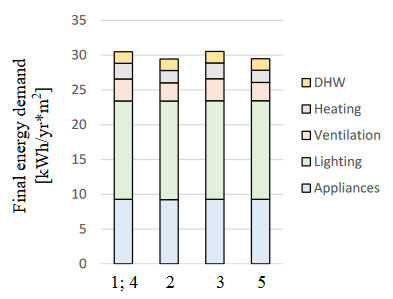Publication - Assessing the gap between a normative and a reality-based model of building LCA
Thomas Jusselme published a paper about "Assessing the gap between a normative and a reality-based model of building LCA".
Recognized as a powerful methodology for the evaluation of environmental burdens, life cycle assessment (LCA) must be performed with close-to-reality inputs to be robust and accurate. However, the necessary real-world data is hardly available at the design stage, resulting in current LCA practice being mainly based on standards and norms as hypothesis of building contexts, therefore inducing uncertainties in results. The current paper presents a methodology to collect a subset of such input data in a function of the context more accurately than the standards. It then studies the impact of such uncertainties in the LCA results. Through an academic building case study that measured data concerning the building occupancy (A), i.e. the hourly occupancy rate and density, the hourly appliance consumption rate (B), and the hourly conversion factors of environmental impact of the electricity mix (C), the LCA results for the GHG emissions and primary energy consumption are compared between normative- and measurements-based input parameters. The measured occupancy rate (A) is shown to impact the LCA results the most, especially the embedded impacts, by implying a new occupancy density: the building population increase of +32% leads to a significant increase of the embedded impacts related to furniture. The variability in appliance usage (B) is marginal between measures and standards and therefore does not lead to a significant change in LCA results. The use of hourly conversion factors (C) indicates an underestimation of the GHG emissions and, at the same time, an overestimation of the primary energy when assessed with mean annual values. The combined effect of simultaneously using the three reality-based input parameters (A, B, C) mostly affects the non-renewable part of the cumulative energy demand indicator (-9% reduction of the operational part), followed by the cumulative energy demand (-7%) and GHG emissions indicators (-3%). The research findings affect not only LCA research but also practitioners such as architects or building contractors who need to respect ambitious environmental targets.
Read the paper on ARODES : https://hesso.tind.io/record/5451?ln=fr
